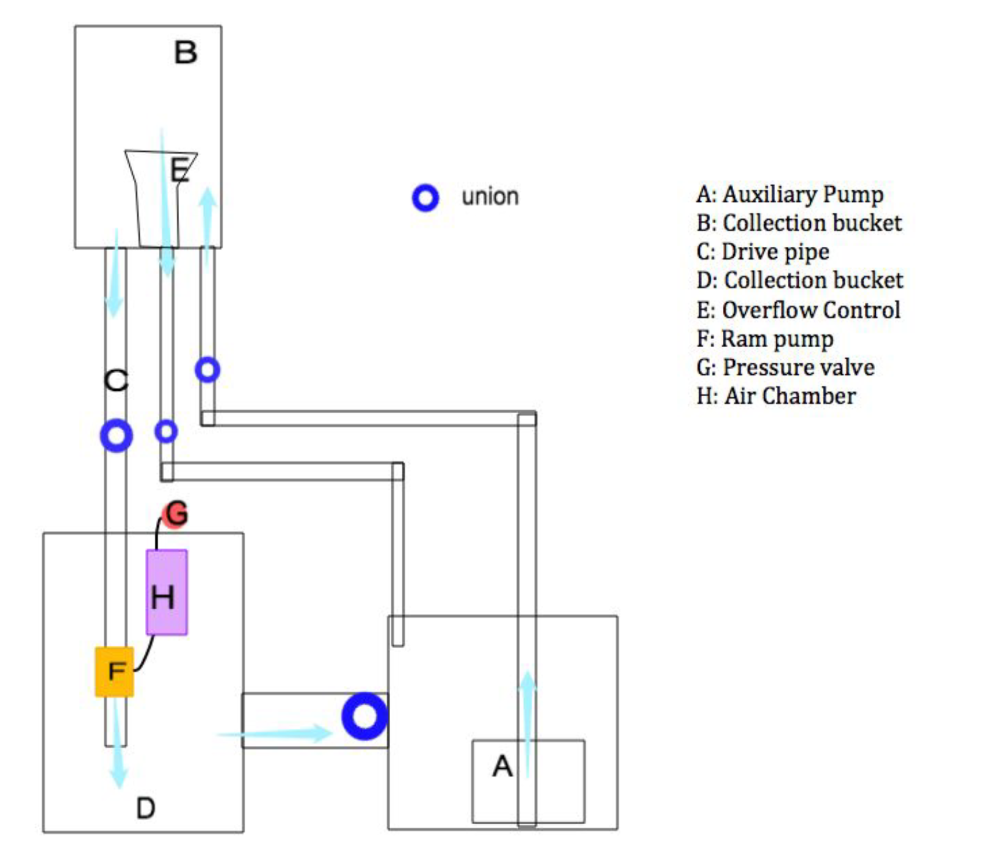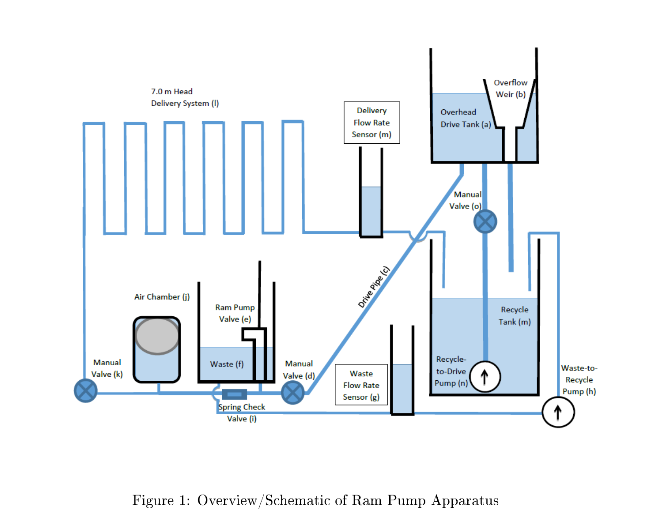Christine Curtis, Harrison Gill, Teresa Wong
Abstract:
AguaClara plants are driven entirely by gravity. This makes it difficult to provide treated, running water in the plants to fill chemical stock tanks and to provide bathroom service. The Ram Pump sub-team was charged with designing and optimizing a pump to elevate a small amount of water in the plant. The pump works by transferring the momentum from a large amount of water falling a short distance into the potential energy to raise a small amount of water. Initial efforts were focused on designing and building a modular test pump to characterize how ram pumps function and how to optimize performance and ease of construction for specific sites. To accomplish this, we developed a MathCAD document to characterize the testing parameters that we anticipated would most affect the modular pump performance. From these parameters, we were able to collect data regarding cycle time, mass pumped per cycle, and aver- age ow of the pump under various configurations. Future teams should explore better data acquisition methods to collect instantaneous velocity data within each cycle. Eventually, decisions regarding the design of the full-scale pump will be made based on experimentation with adjusting these parameters.













